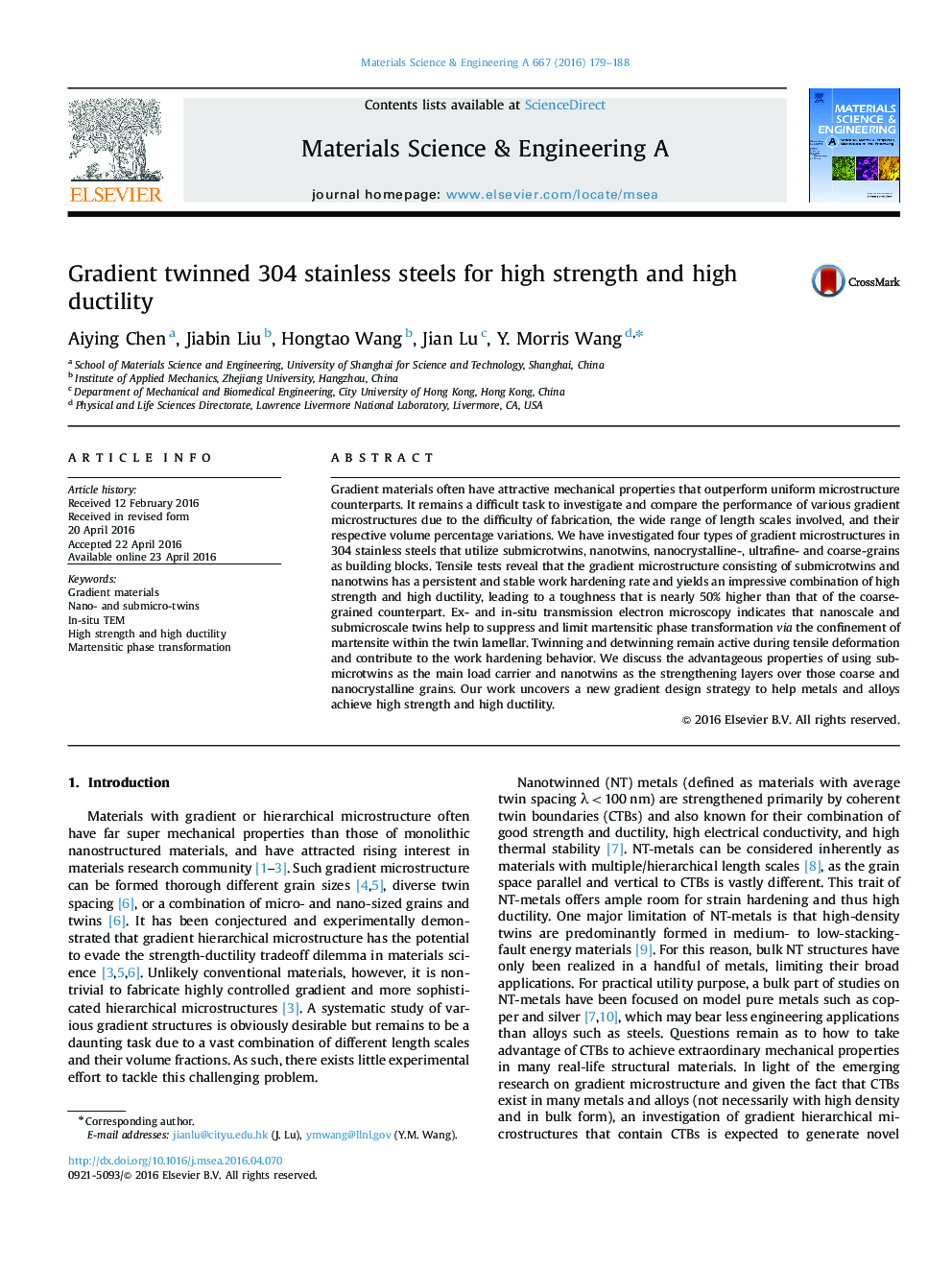| Article ID | Journal | Published Year | Pages | File Type |
|---|---|---|---|---|
| 1573300 | Materials Science and Engineering: A | 2016 | 10 Pages |
Abstract
Gradient materials often have attractive mechanical properties that outperform uniform microstructure counterparts. It remains a difficult task to investigate and compare the performance of various gradient microstructures due to the difficulty of fabrication, the wide range of length scales involved, and their respective volume percentage variations. We have investigated four types of gradient microstructures in 304 stainless steels that utilize submicrotwins, nanotwins, nanocrystalline-, ultrafine- and coarse-grains as building blocks. Tensile tests reveal that the gradient microstructure consisting of submicrotwins and nanotwins has a persistent and stable work hardening rate and yields an impressive combination of high strength and high ductility, leading to a toughness that is nearly 50% higher than that of the coarse-grained counterpart. Ex- and in-situ transmission electron microscopy indicates that nanoscale and submicroscale twins help to suppress and limit martensitic phase transformation via the confinement of martensite within the twin lamellar. Twinning and detwinning remain active during tensile deformation and contribute to the work hardening behavior. We discuss the advantageous properties of using submicrotwins as the main load carrier and nanotwins as the strengthening layers over those coarse and nanocrystalline grains. Our work uncovers a new gradient design strategy to help metals and alloys achieve high strength and high ductility.
Related Topics
Physical Sciences and Engineering
Materials Science
Materials Science (General)
Authors
Aiying Chen, Jiabin Liu, Hongtao Wang, Jian Lu, Y. Morris Wang,
